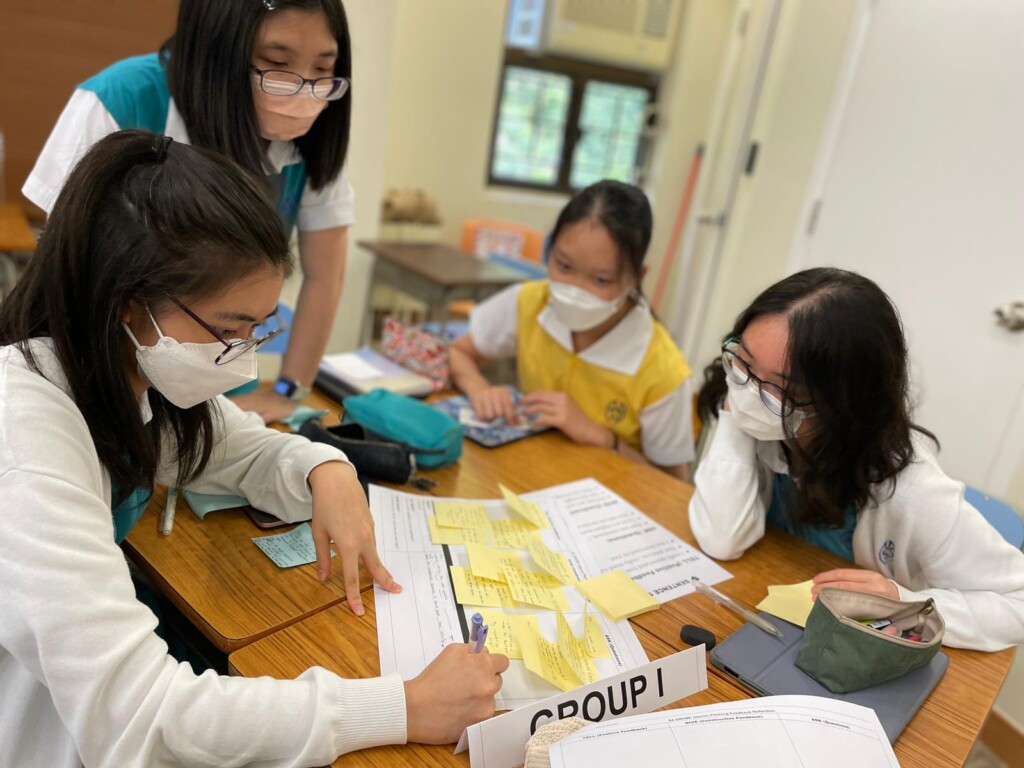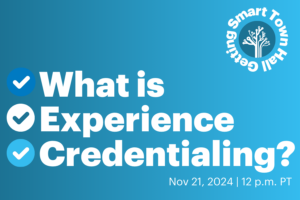Fostering Student-Centered Environments: From Teacher Assessed through Grades to Self, Peer, Expert Feedback and Critique
Key Points
-
Transitioning from a grade-based to a feedback-based system can enhance long-term learning outcomes and student engagement.
-
Implementing student-centered practices like peer review sessions and feedback journals can cultivate a culture of continuous improvement and intrinsic motivation in students.

Why do we award grades? Do they really improve learning?
Research shows that in the short term, grades do indeed improve learning outcomes…on standardized tests.
But when it comes to retaining information, thinking critically, recalling concepts later on, and applying + transferring learning to new contexts, grades are proven to be very ineffectual.
There’s a much more powerful, research-based alternative. Feedback and Critique.
But it’s not only learning outcomes that improve when we offer feedback and critique in our classrooms. Learners also demonstrate greater cooperation, trust, and intrinsic motivation.
Case Studies in Going Gradeless
In a high school English classroom Student-Centered Practitioner Gary Heidt, founder of Nova Lab and High School English Teacher made the decision to go gradeless when he saw that his students were overly stressed and “just checking achievement boxes, climbing each ladder so they could get to the next.”
He noticed it “wasn’t really about learning or things they wanted to do, it was just about reaching the next tick box.”
Gary replaced tick boxes with a system of ongoing feedback, narrative comments, and peer review. Students would no longer receive grades on intermediary tasks for longer-term writing assignments or projects, but rather feedback on how to improve their work for subsequent drafts.
They kept track of each draft in dynamic digital portfolios. To manage the process and keep track of individual progress, students used dynamic Kanban boards to mark tasks that were planned, being worked on, or completed. They presented their growth in dynamic ‘Presentations of Learning’ at the end of each semester.
And while Gary explains that it took time to adapt to an ungraded system, the results were incredible. Students sought out feedback for work on their own, demonstrated significant growth, and in formal “pitches” could articulate exactly what they were learning in class.
Gary retells the story of one former student, now at the top of her class in University, who wrote a letter thanking him for “asking for her thoughts, and listening to them.” She goes on, “You taught us that everyone is constantly improving. You taught us not like children, but like high-minded people.”
But it’s not just Gary who is using feedback and critique to supplement or replace grades.

At VIS Better Lab School in Taiwan, students present their learning at the end of each semester in formal ‘presentations of learning.’ (POLs) In these 8-10 minute presentations for a panel of peers, students demonstrate major concepts learned, skills and habits of mind gained from taking on personalized projects, challenges they have overcome, and finally, areas in which they would still like to improve. After the presentation, their peers offer additional insights and feedback for the presenter. The presentations of learning are ungraded and instead receive a pass/fail mark, determining if they can move onto the next year’s level.
Student-centered powerhouse High Tech High in San Diego also uses presentations of learning to supplement grades. In this video, a 12-year-old student stands tall in front of his peers and exclaims, “I think I have gotten more balanced and responsible with my work, and I’m really proud of that.” His teacher jots down questions for the ensuing 1:1 conversation they will have once he finishes presenting.
Another confident girl with tightly bound braids reflects on the power of POLs on her learning, “They help you reflect on what you want to become, or what you have accomplished…like a lily pad in the middle of the river that you are hopping over.”
Getting Started
As a student-centered practitioner, what resonates most with you? How might you create a culture of ongoing feedback and critique in your classroom in the 2024-2025 school year?
You might try…
- Peer Review Sessions: Schedule weekly sessions where students review each other’s work using a structured rubric to provide constructive feedback. At Futures Academy at the International School of Beijing, we used a gallery walk format for these sessions. Students sat down at a piece of work and used the rubric to generate kind, helpful, and specific comments. When finished, they would rotate to a new piece of work. The evidence it was working was in the specificity of each comment.
- Modeling Effective Feedback: Demonstrate how to give and receive feedback by role-playing examples of constructive and respectful critiques. In my former 6th grade Humanities class we took a fun spin on these role-plays. In small teams, students acted out in scene one how not to give and receive feedback, and in scene two, modeled exemplary feedback behaviors. In addition to generating a ton of laughs, we co-constructed a list of norms for future sessions.
- Feedback Journals: Have students maintain journals where they record feedback received, reflect on it, and set goals for improvement. Deborah McNally, a personal project facilitator, has students use a simple .ppt slide deck with distinct checkpoints for reflective questions, and relevant evidence of growth.
- Feedback Ladder Protocols: Use a ladder approach where students start with positive comments, then move to suggestions for improvement, and end with questions to provoke further thinking. During tuning sessions at Marymount Secondary School, students regularly rotate roles for each rung of the ladder in giving feedback on community project work.
- Group Feedback Activities: Incorporate group activities where students collaboratively review and critique each other’s work, fostering a sense of collective responsibility for learning. Ron Berger, Chief Program Officer at Expeditionary Learning facilitates these sessions regularly, and brings in work from outside the classroom to help establish the norms. He asks questions like, “What do you notice? What would you tell the author of this work? What specifically stands out to you?”
The excerpt above is from Shift 10/Chapter 10 of my new book, ‘Where is the Teacher: 12 Shifts for Student-Centered Environments‘ scheduled for release in Early August. It includes more stories, strategies, and immediate takeaways for shifting from teacher-led to student-centered environments in the new school year. Attend the launch party to meet like-minded educators.
Here’s to empowering our students to take ownership of their own learning!








0 Comments
Leave a Comment
Your email address will not be published. All fields are required.